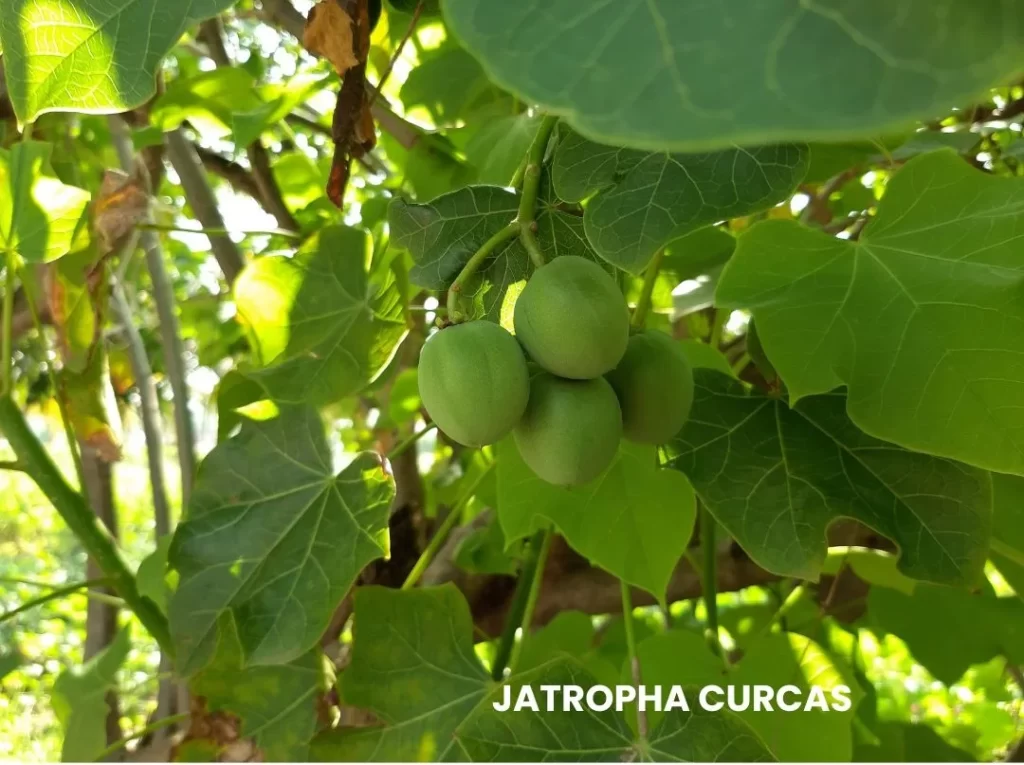Jatropha Curcas, commonly known as the Purging Nut, is a valuable remedy for cholera and diarrhoea.
Its primary action is on the gastrointestinal system, providing relief from severe abdominal symptoms.

Table of Contents
ToggleSOURCE INFORMATION
Scientific Classification
- Family: Euphorbiaceae
- Genus: Jatropha
- Species: J. curcas
Origin
- Native to Central America, Jatropha Curcas is now widely cultivated in tropical and subtropical regions worldwide.
- It has been used traditionally in various cultures for its medicinal and purgative properties.
Historical Facts
- Known for its strong laxative effects, Jatropha Curcas has been used to treat various gastrointestinal issues.
- It was introduced into Western medicine due to its effectiveness in treating cholera and severe diarrhea.
DRUG PATHOGENESIS
Jatropha Curcas acts mainly on the gastrointestinal system, alleviating symptoms such as nausea, vomiting, diarrhea, and abdominal cramps.
It is particularly useful in conditions with profuse, watery stools and severe abdominal pain.
KEY CHARACTERISTICS
- Cholera and Diarrhea: Effective in treating severe, watery diarrhea, often accompanied by abdominal pain and cramps.
- Gastrointestinal Symptoms: Hiccough, vomiting, nausea, thirst, burning sensation in the stomach, and constrictive pain in the epigastrium.
- Abdominal Distention: Gurgling noises and pain in the hypochondria (upper abdominal region).
- Extremities: Cramps in muscles, especially in the calves, legs, and feet, and coldness of the entire body.
DETAILED ORGAN SYMPTOMS
STOMACH
- Hiccough: Followed by copious vomiting.
- Nausea and Vomiting: Induced by drinking, with an acrid feeling in the throat.
- Thirst: Great desire for water.
- Burning Sensation: Heat and burning in the stomach with crampy, constrictive pain in the epigastrium (upper central part of the abdomen).
ABDOMEN
- Distention: Abdominal distention with gurgling noises.
- Pain: In the hypochondria, especially in the region of the liver and under the right scapula to the shoulder.
- Urge to Urinate: Violent urging to urinate.
STOOL
- Diarrhea: Sudden, profuse, watery stools resembling rice-water. Forced discharge with loud gurgling noises in the abdomen, often associated with coldness, cramps, nausea, and vomiting.
EXTREMITIES
- Cramps: In muscles, particularly in the calves, legs, and feet.
- Coldness: Coldness of the whole body.
- Pain: In the ankles, feet, and toes.
- Sensitivity: Heels are sensitive.
MODALITIES
- Better: By placing hands in cold water.
RELATIONSHIP WITH OTHER DRUGS
Compare:
- Camphor (Camph): Used for its antispasmodic and coldness-relieving properties.
- Veratrum Album (Verat): Effective for similar gastrointestinal symptoms and severe diarrhea.
- Gambogia (Gambog): Known for its purgative action on the bowels.
- Croton Tiglium (Croton): Used for explosive diarrhea and abdominal pain.
- Jatropha Urens (Sponge-nettle): Noted for treating edema and cardiac paresis.
DOSE
- Recommended in third to thirtieth potency.
Frequently Asked Questions
What conditions can Jatropha Curcas treat?
- Jatropha Curcas is primarily used for treating cholera, severe diarrhea, and associated gastrointestinal symptoms.
How is Jatropha Curcas administered?
- It is typically administered in homeopathic potencies, ranging from third to thirtieth potency.
Are there any side effects of Jatropha Curcas?
- When used in homeopathic doses, side effects are rare, but some individuals may experience mild gastrointestinal disturbances.
Meaning of Difficult Words
- Epigastrium: The upper central part of the abdomen located just below the ribcage.
- Hypochondria: The upper abdominal region on either side of the epigastrium.
- Constrictive Pain: Pain characterized by a tight, squeezing sensation.
- Purgative: A substance that causes evacuation of the bowels; a strong laxative.
- Cardiac Paresis: Weakness or partial paralysis of the heart muscles.
